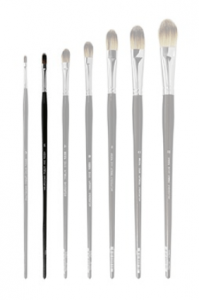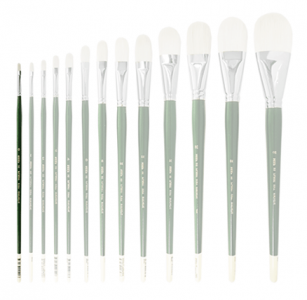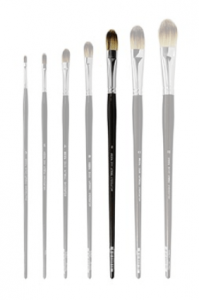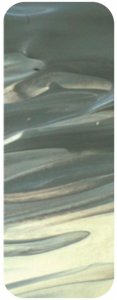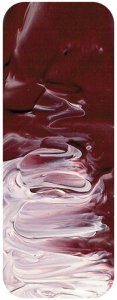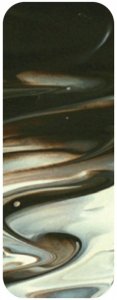Description
"Primary Blue is a surprise package for the artist. Primary Yellow and Primary Red are designed to work with it in 3, 4, and 5 colour mixing methods and Primary Blue works perfectly for that as expected, but while Primary Yellow and Primary Red work in conventional colour mixing scenarios in a way very similar to the pigments near to them on the colour chart and so cannot be considered as unique independent colours, Primary Blue is a unique colour that is valued by artists using a wide variety of techniques.
Its role as one of the 3 basic primary colours should be examined first since this is the reason for its existence in the first place. While artists often use the term loosely to indicate any kind of yellow, red or blue it is not true that all pigments in those colour ranges is equally good at mixing colours. Ultramarine Blue, for example cannot make bright greens since it is too reddish of a blue to do that, although it is well suited to making violets. A golden yellow similarly is not so good for making bright greens but is good for making orange. When a colour, however, is exactly in the centre of the spectrum hue, a yellow for example that is neither greenish or reddish, it is able to create the widest range of colours. A centre of the yellow spectrum yellow can therefore make good greens as well as good oranges. The spectrum centreed red makes both orange and violet, and the spectrum centreed blue makes both greens and violets. This is the basis of the 4 colour printing process in which black is added to the 3 spectrum centreed primaries and white is contributed by the white of the paper. For an acrylic painting to follow a similar methodology, white needs to be provided by adding white paint to the mixes since paint is usually applied more thickly than printing ink and covers the white of the ground too efficiently to not use the tube white. For many years printing inks have used a particular shade of Phthalo Blue mixed with a lot of extender to lighten it to the colour they call cyan. Matisse has avoided the extenders as they would make the colour too transparent to be useful as a paint and have blended the correct shade of Phthalo Blue pigment with white to get this lovely cyan-like colour.
Mixing colours with the other 2 primary colours shows the powerful potential of these colours - it really is possible to reduce your palette down to 5 colours and yet paint full colour pictures. Mixing the Primary Blue with Primary Yellow results in a bright green of great beauty. Mixing Primary Blue with Primary red in front of students often gets comments like ??Oh, wow?? because the resulting violet is so clean and beautiful. Using these 3 primaries plus black and white is the perfect way for teachers to demonstrate the basic theories of colour mixing. It is very simple, but a class can be entranced for hours as they learn how much they can do with so little.
Primary Blue doesn???t need its primary cousins to shine, however. The landscape artist soon discovers that Primary Blue mixed with Australian Sky Blue makes fabulous sky colours. Ocean can also benefit from this colour. Tropical seas, especially on the Great Barrier Reef or in the Coral Sea of North Queensland or the Indian Ocean in places like Monkey Mia where the dolphins come to the shore to play with the humans, or in the Timor Sea, or in the Caribbean - all have beautiful turquoise colours in the water. This is seen to great effect in watercolours by Winslow Homer in places like Bermuda. Those turquoise colours can be made by mixing Primary Blue with Cobalt Teal. Even greener turquoises can be made by mixing with Aqua Green Light. These colours are exquisite and closely resemble the sorts of colours in the turquoise gemstone itself.
Mixing Primary Blue with earth colours is another surprise. Transparent Yellow Oxide and Primary Blue make a wide range of greens from bottle green to transparent earthy olives and leaf greens. Tr

